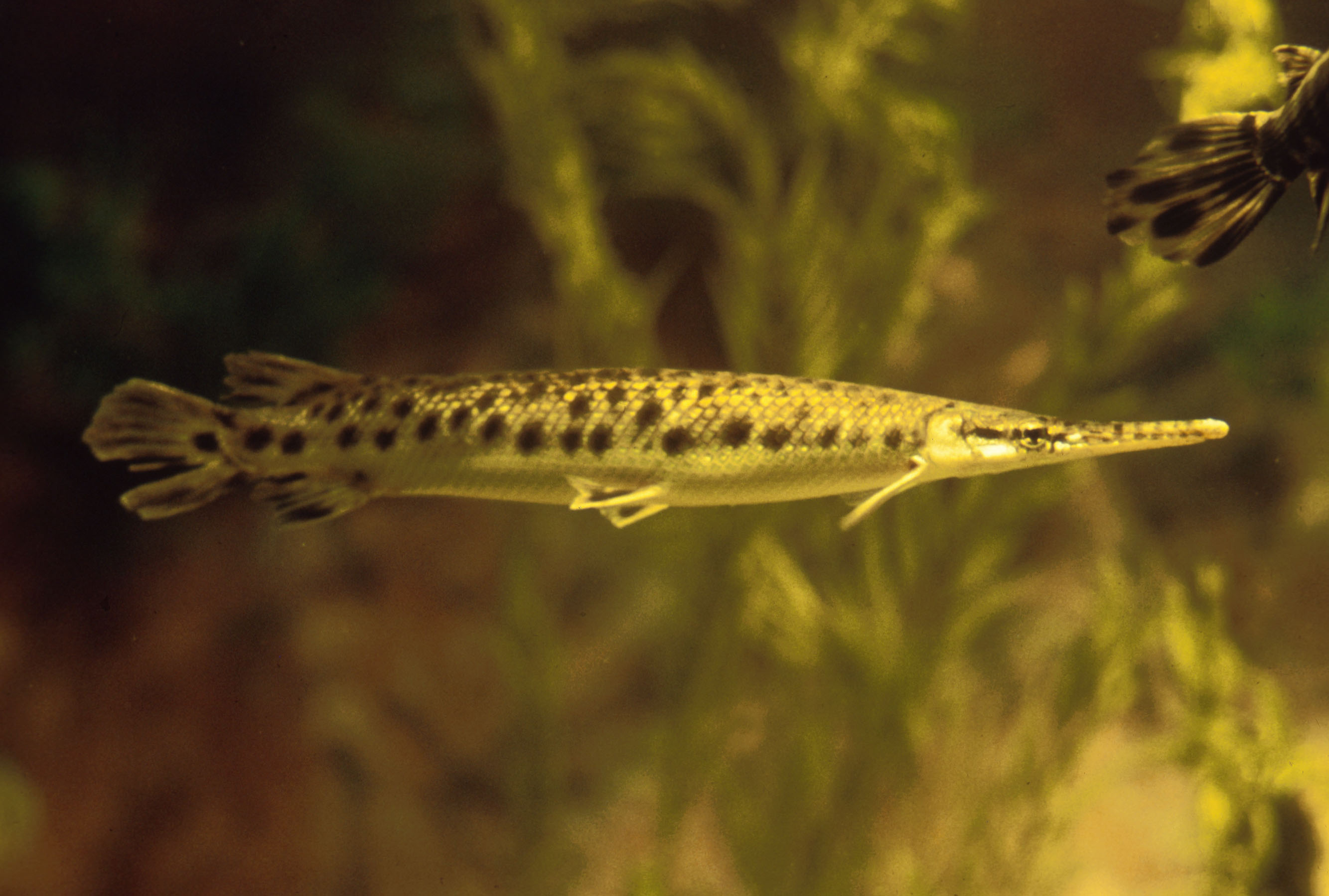- Holostei
taxobox
name = Holostei
fossil_range =Mesozoic –Recent

image_width = 250px
image_caption =Spotted gar , "Lepisosteus oculatus"

image2_width = 250px
image2_caption =Bowfin , "Amia calva"
regnum =Animal ia
phylum = Chordata
classis =Actinopterygii
infraclassis = Holostei
subdivision_ranks = Orders
subdivision =Amiiformes Lepisosteiformes Holostei are
bony fish that show primitive characteristics. There are eight species divided among two orders, theAmiiformes represented by a single living species, the bowfin ("Amia calva"), and theLepisosteiformes , the gars. There are more species to be found in the fossil record.Holostei share with other primitive fishes a mixture of characteristics of teleosts and
shark s. In comparison with the other group of primitive fishes, the chondrosteans, the Holostei are closer to the teleosts and further from sharks: thespiracle found in sharks and chondrosteans is reduced to a remnant structure; the skeleton is ossified (a thin layer of bone covers a mostly cartiliginous skeleton in the bowfins). In gars, the tail is still heterocercal but less so than in the chondrosteans; bowfins have many rayed dorsal fins and can breathe air like thebichir s.The gars have thick ganoid scales typical of
sturgeon s whereas the bowfin has thin bony scales like the teleosts. The gars are therefore considered more primitive than the bowfin.cite web | url =http://www.liv.ac.uk/~rickl/Fisheries_Web/ichthyology/holostei.htm| title=Holostei| author=Rick Leah |publisher=University of Liverpool (http://www.liv.ac.uk)|]The Holostei is often regared as paraphyletic; as a result this infraclass is often not used, the two orders contained in it being often treated simply as members of the sub-class
Neopterygii without any taxonomic association.ITIS | ID = 161089 | taxon = Holostei | year = 2006 | date = 30 June] However, recent work mitochondrial analysis of DNA seems to support its recognition, so the question is not yet resolved. Nearly all living bony fishes are teleosts.The name derives from the Greek, "holos" meaning whole and "osso" (osteo) meaning bone: a reference to their bony skeletons.
References
External links
* [http://www.liv.ac.uk/~rickl/Fisheries_Web/ichthyology/holostei.htm liv.ac.uk/.../holostei]
Wikimedia Foundation. 2010.
